Knitted items have been present in any wardrobe since ancient times. It is impossible to imagine the winter time, as well as the spring-autumn period or even a hot summer without knitted clothing items.
Content
Usually frosty winter days are associated with voluminous and warm knitted accessories that decorate your image and warm you. Soft scarves, hats, shawls and palactins with hook can be tied without problems yourself. For this you only need a little time and patience. Knitting a crochet palact will help you create an original and bright wardrobe without large financial costs. After all, it is known that buying a steamer in the store is very expensive, and it will not hit it yourself so much on your wallet. In addition, a connected thing with your own hands is always in fashion.
In this article, we will consider the features of the use of palantine, as well as styles that are impossible without this item of clothing. We will talk about the preparatory work before knitting a crochet for beginner needlewomen and we will give several new products with crochet.
Crochet Palantine - a beautiful and comfortable clothing item
In the wardrobe of any modern woman there is a huge number of scarves, scarves, shawls, stoles for a spectacular addition of any image and style. By competently picking up the stole to the chosen set of clothing, you can give it freshness and originality.
Palantine is almost the same as shawl. They differ only in shape, so the stole has a rectangular shape, and the shawl is triangular. In turn, the stole is very similar to a large scarf. This accessory came into fashion in France, where aristocrats used fur capes to protect against cold. After the steamer became in demand in the courtyard of the English queen. In the modern world, the original image has greatly modified. Now a palantin is considered a large scarf made of different materials. It can be a knitted steamer, crochet and knitting steamers, silk steamer.
Crocading scarf-palact is a very relevant accessory for the girl’s winter and summer image. Knitting such a palantine is possible even for beginner needlewomen. The main thing is to know what you will wear with, what threads you need to use and which threads for a crochet are chosen.
Features of the use of stoles
- Palantine is a universal accessory, which, if possible, can be turned into a cloak on the head and shoulders, into an original jacket and shawl.
- Crocheted steaming for winter weather and for the summer heat, just correctly picking up the yarn for the product.
- Palantine is a very bright and interesting accessory for an evening outfit.
- A tied palact with your own hands looks much more interesting than bought in the store. Moreover, you can independently choose the color and patterns for knitting.
- The main feature of a knitted steamer crochet is a simplicity for knitting even to beginner needlewomen. Provided correctly, choosing schemes and patterns, based on your experience and skill.
What to wear with a stoop
- You can crocheted a palact as a cloak. By competently picking up the yarn in calm and restrained tones, you can connect an excellent addition to a business style. Such a steamer can easily be combined with classic trousers and a blouse or shirt at work in the office. It will allow you to hide some disadvantages of the figure and save you from the cool temperature in the room.
- Palantine is also indispensable in cold weather as a large scarf, which is tied on top of a coat or jacket. Applying various methods of socks of stoles on outerwear, you can create dozens of completely different images.
- Crochet stolen palants can be worn as a capacitance on the head during windy weather. This will help protect your hairstyle.
- An openwork and light steamer will be an excellent addition to the evening dress. Made of thin yarn from correctly selected patterns, the steamer will become a luxurious accessory, which will advantageously emphasize your outfit at the festival or other event.
- With the help of a beautiful belt, you can crocheted a crocheted steamer into an original jacket or sleeveless jacket.
- Openwork clapping of cotton can be a great addition to a swimsuit on the beach. Beautifully tied with the use of brooches or pins, you can make an interesting beach dress or tunic.
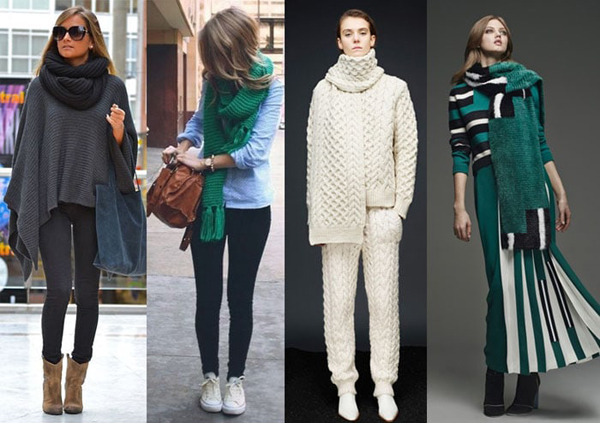
We begin to crochet knitting
For beginner needlewomen, as well as for experienced ones, knitting a steamer should begin with a preparatory stage. It is important to decide on the crocheted palantine model, choose the necessary materials and yarn, as well as find interesting and beautiful patterns for knitting a crochet.
Choosing a Crochet Palantine model
- A correctly selected model is the key to obtaining a beautiful and interesting thing.
- All palactins have a rectangular shape, however, due to a change in the length of the accessory, its width, processing of the edge, completely different models can be obtained.
- For a summer image, lighter and openwork models are suitable, which will have a large number of holes.
- Winter models of stoles are most often more voluminous and dense.
- For higher growth, palatine models are ideal, which have a large length. But such a steamer is hardly suitable for low girls. In this case, it is better to choose a shorter model.
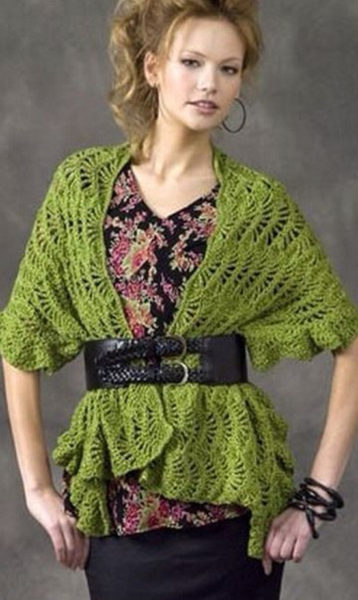
Choosing tools for knitting palantine
- First of all, it is important to choose the right hook for knitting a stoop.
- Hooks are made from a variety of materials. Bamboo or wooden hooks are lighter and perfect for beginner needlewomen. Metal and plastic hooks are the most popular and they are usually chosen by experienced craftswomen.
- The size of the selected hook will depend primarily on the thickness of the yarn you need. If you want to get a lighter and airy knitted canvas, choose a slightly larger hook. For a dense canvas, you can take a hook one size less than the crochet specified in the description of the palact.
- Perhaps in the process of knitting you may need hooks of different sizes, as well as various pins for the formation of patterns and sewing needles.
Crochet yarn selection for knitting
- The choice of yarn will depend on the Palantine model that you want to connect, as well as on the season when you intend to wear it.
- For knitting openwork light stoles for the summer season, give preference to cotton yarn, linen, as well as yarn with a slight content of wool or acrylic.
- A thin thread is suitable for summer steamer, which will create a light and air knitted canvas.
- For winter stoles, select yarn with a high content of wool or mohair. A yarn consisting of several types of threads, for example, 51% wool and 49% acrylic, is also suitable.
- In winter, stole is most often worn over a coat, so large knitting is suitable. And for this the thread should be thick.
- Having chosen natural yarn for crochet palact, remember that in the future such a thing requires a very careful washing. Manual or careless washing with compulsory horizontal drying is suitable. This is necessary so that Palantine does not lose its shape.

Calculation of the number of palact loops crochet
- When knitting with a crochet, it is important to find out the required number of loops for a set of the initial row. This can be found out by tied 10 cm of the sample with the same pattern as you will knit stoles.
- If about 1 cm of the canvas you got 2 loops, and the entire width of the palantine is 45 cm, then the loops should be 90.
- When calculating the number of loops, it is also important to take into account the thickness of the thread, the size of the hook and the density of your knitting.
- When selecting threads, be sure to take into account the size of the hook. If you take the hook thinner than the right one, then the canvas will turn out very dense. If the hook is a size larger, then the stole will be more loose. Usually on the yarn, the manufacturer indicates the approximate size of the hook.
- If you knit a crochet for the first time for the first time, then the calculation of the number of loops is best not to make yourself, but it is preferable to knit according to the found scheme with a detailed description.
Crochet Palantine
There are a huge number of different crochet patterns that can be used to crochet palact. You can strictly adhere to the Palantine scheme you found, or you can, having gained a little experience, try to experiment with the compilation of your pattern pattern. Consider several popular crochet patterns.
- Crochet pattern with crossed columns

Description of the pattern:
- Take the required number of loops crocheted.
- Hitch the first row with crochet with crochet.
- Next, we knit crossed crochet columns. To do this, you first need to remove the crum loop, and then we knit a column with 5 crochet in 4.5 and 6 loops. After that, it is necessary to knit a column with 5 crochet in 1, 2, 3 loops. Thus, a pattern like a pigtail is obtained.
- Pattern with crossed loops

- Simple openwork pattern crochet
This pattern is perfect for beginner needlewomen, as it does not contain complex elements and loops.
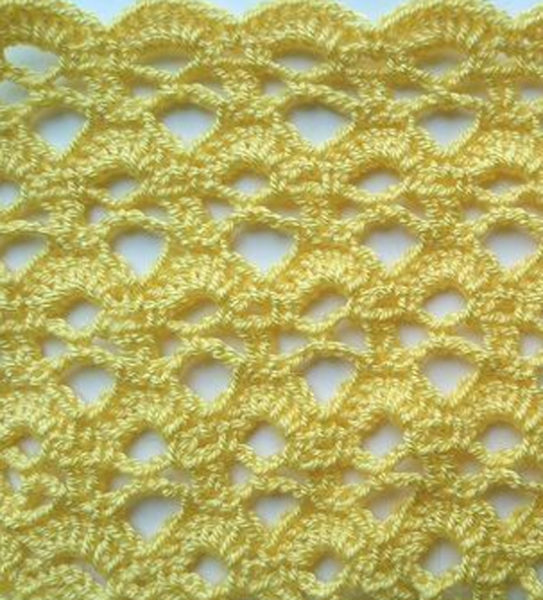
Knitting description:
- Take the required number of loops crocheted.
- We collect 1 hem, 1 tbsp. b/n, 3 air loops, 2 tbsp. C2/N in 4 loop, then again 3 air loops, 1 tbsp b/n to the third loop from the previous column.
- Thus, it is repeated to the end of the row.
- In the second row we collect 5 air. loops, 1 tbsp b/n in the third air loop, 3 c. loops, 1 tbsp. b/n in the first airy loop of the chain, 5 centuries. p., 1 tbsp. b/n in the third century. n. Thus, we repeat to the end of the row.
- 3-1 row: 3 c. p., 3 tbsp s2/n in a chain of 3 c. p., 1 tbsp b/n in a chain of 3 V.P., 7 tbsp s2/n in a chain of 5 V.P., 1 tbsp b/n in a chain of the 3rd century. p., so to the end of the row.
- 4-1 row: 1 century. p., 2 stable b/n, 5 V.P., 3 st. b/n, 5 c. n. And so on until the end of the row.
- 1-4 rows are a rapport of the pattern.
Scheme:

- Openwork pattern for beginners
Such an openwork pattern is perfect for knitting a beautiful steamer crochet.
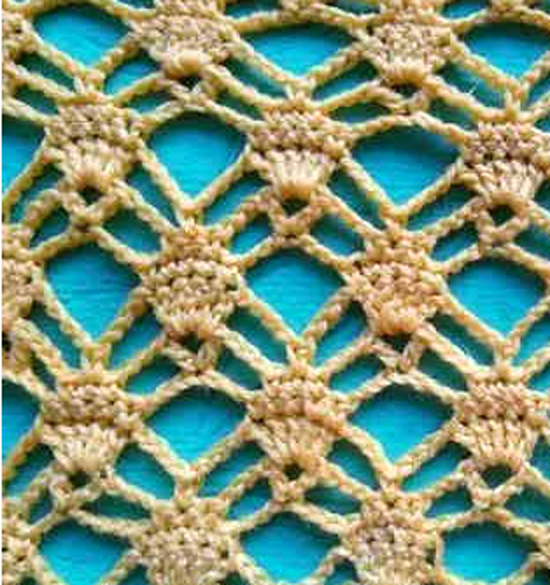
Knitting description:
- Take the required number of loops crocheted.
- 1st row: 1 century. p., 1 tbsp b/n, 3 c. p., 1 tbsp s/n+2 vp.+1 tbsp s/n in 5 c. chains, 3 V.P., 3 tb/n in 9.10.11 loop of the air chain. Thus repeat to the end of the row.
- 2nd row: 5 century. p., 5 tbsp s/n under 2 V.P. previous row, 4 centuries. p., 1 tbsp b/n, 4 c. p., so repeat to the end of the row.
- 3rd row: 6th century. p., 5 stables above the crochet columns of the previous row, 7 centuries. p., 5 tbsp b/n. Repeat to the end of the row.
- 4th row: knit further according to the scheme where 1-6 rows are rapport.
Scheme:

Crochet patterns and description for beginners
For beginner needlewomen, there are a huge number of palatins with a hook with diagrams and a detailed description, which greatly facilitates the knitting process. Below, we give several models of crochet palactins, with attached schemes and a phased description of knitting.
Crochet simple steamer

This delicate steamer crocheted will be a great addition to your winter or spring image. In combination with an elegant coat and competently selected accessories, you will look elegant and romantic. Knitting GO is not at all difficult, so this model of a palantine is available to beginner needlewomen.
The necessary materials: for work, you can take a yarn, which consists of 68% of the boom and 32% cotton, 132 m in 50 grams - you will need 550 grams of jacket for 50 cm in a size of 190 cm. As well as knitting hook No. 3,5.
Palantine knitting density: 10 cm of a knitted fabric of 30 loops, which are three rapports.
Work description:
- Type 163 air loops of the initial chain.
- Next, it is necessary to knit according to the scheme presented below, using the rapports of the pattern.
- 1st row: 1 tbsp. b/n in the second loop of the air chain, *4 in. p., 1 tbsp b/n in the fifth loop after the previous column*. The rapport, allocated by stars, must be repeated 31 times, and at the end, knit 1 tbsp b/n.
- 2nd row: 3 c. p., *1 tbsp s/n in stims of the previous row, 3 tbsp s/n in STs b/n of the previous row, 1 vp, 1 tbsp s/n in the same st. , 2 V.P.*, thus repeat to the end of the row.
- 3rd row: 3 c. n., *1 tbsp s/n in one century. n. previous row, 3 tbsp s/n in the fifth loop, 1 century. p., 1 tbsp s/n in the same fifth loop, 2nd century. n.* - repeat to the end of the row.
- 4th row: this row is knitted as the second.
In this pattern, the rapport is 1-4 rows, which must be repeated until a length of 190 cm. After the knitting ends, the thread must be trimmed and the end is hidden. Next, gently wash the finished steamer and dry it on a horizontal surface in an unfolded state.
Scheme:
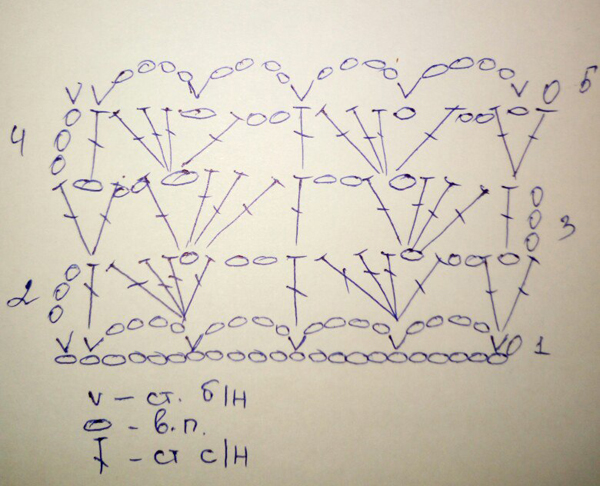
Openwork steamer crochet for beginner craftswomen
The next stole is very easily knitted, it is possible for beginner needlewomen. And the result will surpass all your expectations - the stole is very delicate and airy, an excellent addition to any image.
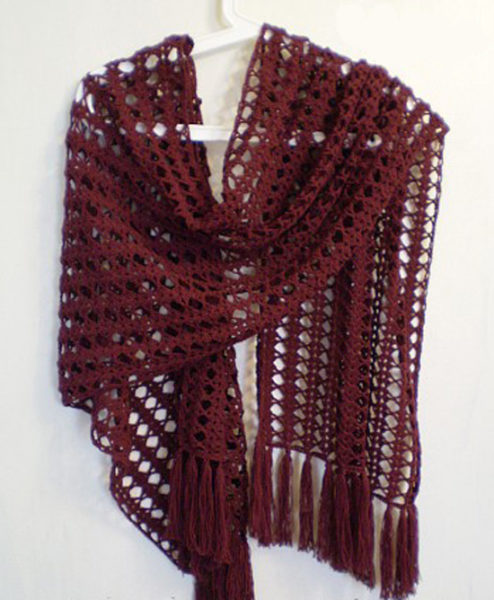
The necessary materials: you will need yarn consisting of 50% wool and 50% acrylic and a thickness of 780 m in 100 grams. A hook in size 2.5. It took about 200 grams throughout the stole.
The size of the palantine is 55 cm by 155 cm. If you want to increase the width of the future steamer, carefully calculate the number of loops. You can use the following formula: 7 multiply by the number of rapports performed plus 6.
Work description:
- Crochet 111 air hinges of the initial row.
- 1st row: dial 3 V.P., knit in each air loop 1 tbsp s/n until the end of the row.
- 2nd row: 3 c. p., 1 tbsp s/n in the second loop, *3 c. p., 4 loops are passed, and in a 5 loop we knit 3 tbsp s/n+2 c. p. + 3 tbsp s/n, 4 c. n., 6 loops, we skip, in 7 we knit 3 tbsp s/n+2 V.P. + 3 tbsp s/n, 4 c. n., 6 loops, we skip, at 7 we knit 3 tbsp s/n + 2 c. p. + 3 tbsp s/n, 3 c. p., 2 tbsp s/n*, so we knit to the end of the row.
- 3rd row: 3 c. p., 1 tbsp s/n in the second loop, 2 c. n., 1 tbsp b/n in a chain of 3 c. p., 2 V.P., 3 tbsp s/n + 2 V.P. + 3 tbsp s/n in the middle of the "shell" of the previous row, 2nd century. p., 1 tbsp b/n, 2 c. n. and so on, according to the scheme to the end of the row.
- 4th row: 3 c. p., 1 tbsp s/n in the second loop, *3 c. p., 3 tbsp s/n + 2 c. p. + 3 tbsp s/n in the middle of the "shell" of the previous row, 4 centuries. p., 3 tbsp s/n + 2 c. p. + 3 tbsp s/n in the middle of the shell of the previous row, 4 c. p., 3 tbsp s/n + 2 c. p. + 3 tbsp s/n in the middle of the shell, 3 c. p., 2 tbsp s/n*, continue until the end of the row.
- 5th row: knitted similarly to the 3rd row of the pattern.
- 6th row:* 6th century p., 1 tbsp b/n in the middle of the shell, 6th century. p., 1 tbsp b/n in the middle of the shell, 6th century. n., 1 tbsp b/n in the middle of the shell*, 6th century. n., continue until the end of the row.
- 7th row: Similarly, 1 row.
The rapport of this pattern is 1-6 rows. Repeat this pattern until the desired height is achieved. The edges are decorated with fringe of the same color.
Pattern of pattern:
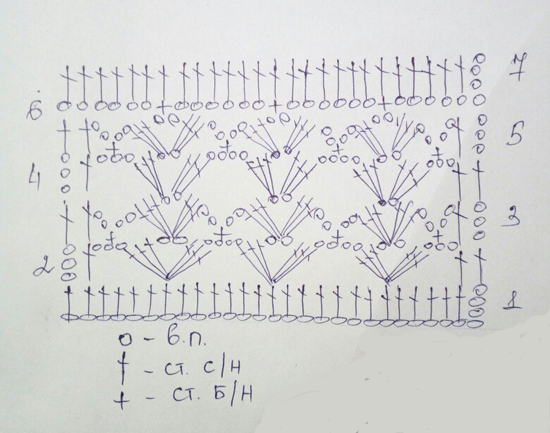
Openwork Palantine crochet from the mohair
The next steamer is made of mohair and is a light and airy lace. It can be worn in a cool summer evening or as an addition to evening outfit. It is not at all difficult to bind it, we will consider everything in more detail.
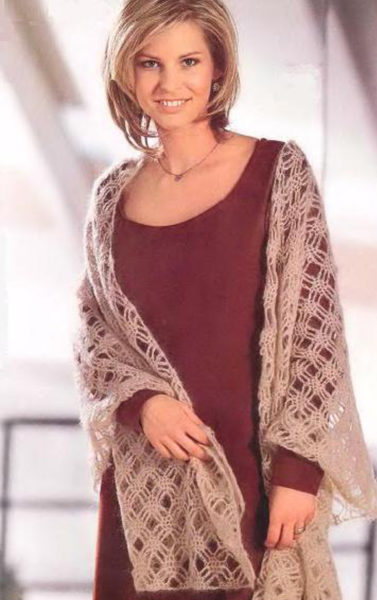
The necessary materials: you will need yarn consisting of 80% mohair and 20% polyamide with a thread thickness of 100 m in 25 grams - a stoop for 60 cm by 220 cm about 275 grams. Hook No. 6.
Work description:
- In knitting the Palantine pattern, it is necessary to repeat 1-10 rows once, and then repeat 5-10 rows all the time.
- Hell crocheted No. 6 89 of the initial row air loops.
- 1st row: 1 century. p., 2 stb/n in 2 and 3 loop chains, 6 air. n., *3 loops of the chains, we skip in the next 5 loops of the chain we knit 5 st/n, 6 air. n.*, so we knit to the end of the row.
- 2nd row: 1 air. p., 1 tbsp b/n in 2 loop of the previous row, *3 air. p., 1 tbsp b/n in the middle of a chain of 6 ODP.P., 3 air. p., 3 st. B/N in 2.3.4 tbsp of the previous row*, we knit this pattern to the end of the row.
- 3rd row: *4 n., 3 loops we skate, we knit 3 st/n in the following loops, 3 air. p., 3 loops are skipped, *1 st/n in the next one, we continue to knit until the end of the row.
- 4th row: 6 air. n., 2 loops, let us, *5 tbsp, 6 air. n.*, 5 loops, we pass, 5 st/N in the next five loops, then we knit in this way to the end of the row.
- 5th row: 4 air. n., 4 loops, pass, 3 st/n, *3 air. n., 1 tbsp b/n in the middle of a chain of 6 air. n. previous row, 3 air n., 4 loops, we skip, 3 st/n* and so on until the end of the row.
- 6th row: 1 air. p., 1 tbsp b/n in the second loop of the row, *3 n., 3 sang pass, 1 tbsp b/n, 3 air. n., 3 loops, we skip, 3 st/n*, so we continue and the end of the row.
- 7th row: 1 air. p., 2 stb/n in 2 and 3 loop, 6 air. p., 5 loops, we skip,* 5 tbsp b/n, 6 air. n.* And so on until the end of the row.
- 8th row: 1 air. p., 1 tbsp b/n in the second loop of the row, * 3 n., 1 tbsp b/n in the middle of a chain of 6 air. n. previous row, 3 air p., 3 st/n*, so we knit to the end of the row.
- 9th row: 4 air. n., 4 loops, pass, 3 st/n, *3 air. p., 3 loops, we skip, 1 tbsp b/n, 3 air. n., 3 st/n* and we knit the whole row thus.
- 10th row: 6 air. n., 3 loops, let us, *5 tbsp b/n, 6 air. P*.
- Next, we repeat 5-10 rows to 208 rows inclusive.
Scheme:

Crochet Palantine - photo
Crochet delicate pink

Beautiful steamy palact from lush columns crochet

Scheme

Crochet -paratin

Scheme
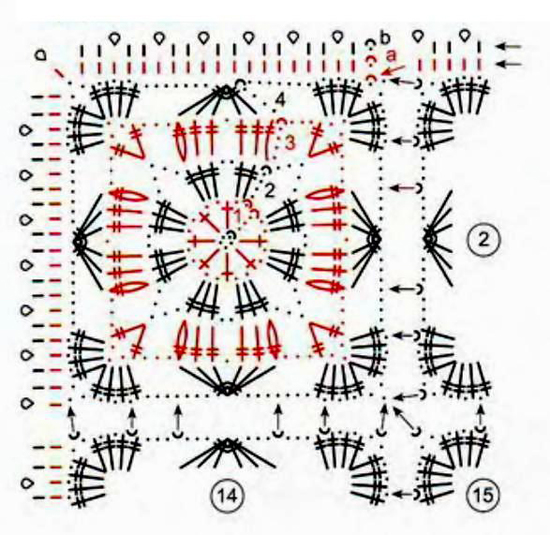
Video Gallery of Master Classes of Knitting Palantine Crochet
- Palantine shal made of Solomon loops.
- Palantine from elongated loops.
- Flower steamer crochet-master class.
- Crochet delicate scarf-palars-the technique of non-disclosure knitting.
Crowning a do -it -yourself palact is a great addition to any wardrobe. Having selected the original Palantine model and interesting patterns, you can independently create a knitting masterpiece.









Comments
a couple of years ago, there was no side of metrogils from the same problem, there were no side effects ...
I’m not a fan of peeling at all, it saves from acne of metrogil, it also smoothes it ...
Great article! ...
I take the second course of the Capsules Climafite 911. The tides went very quickly. It became calmer, irritability went away and I sleep well ...
i also noticed - it is worth nervous, everything immediately affects the face. Therefore, I try to avoid conflicts and unpleasant people. Of the creams, I like Miaflow from wrinkles - smoothes not only small wrinkles ...